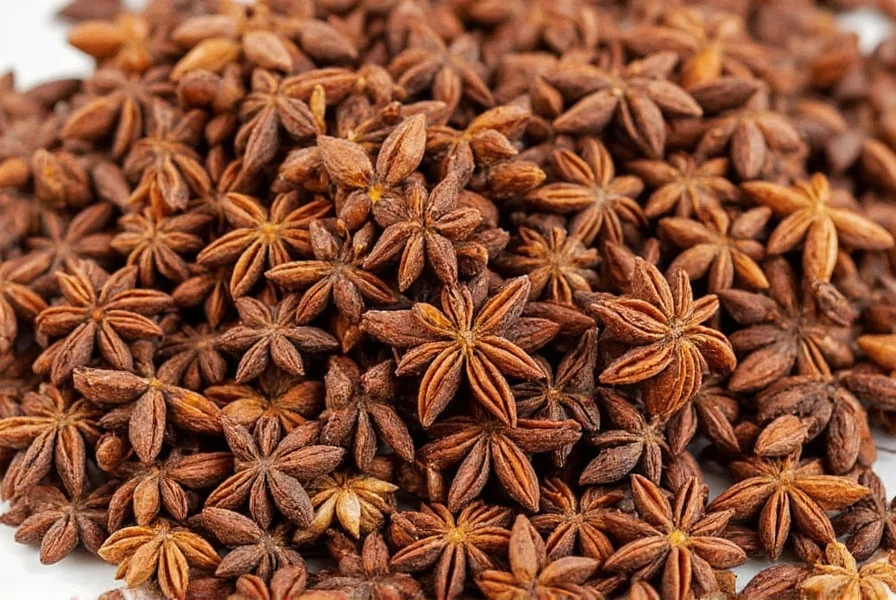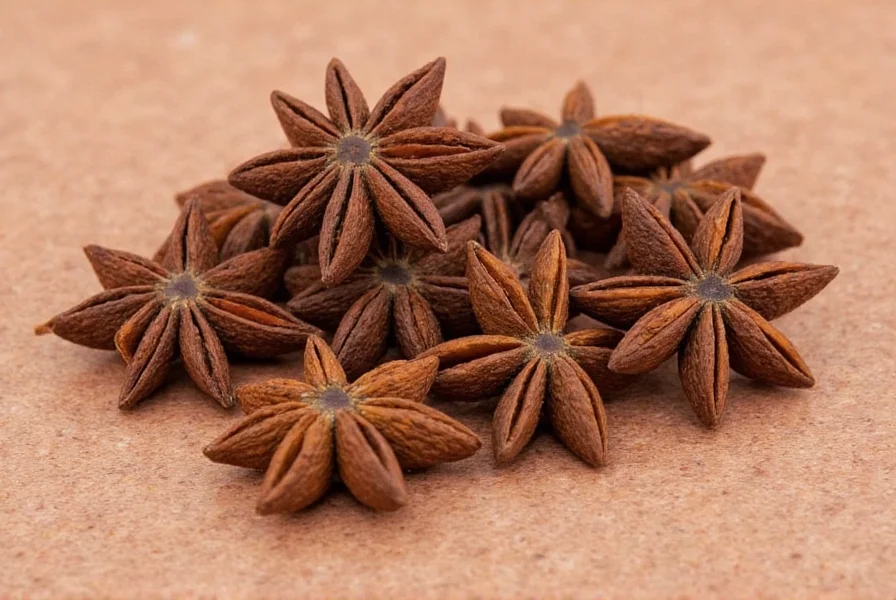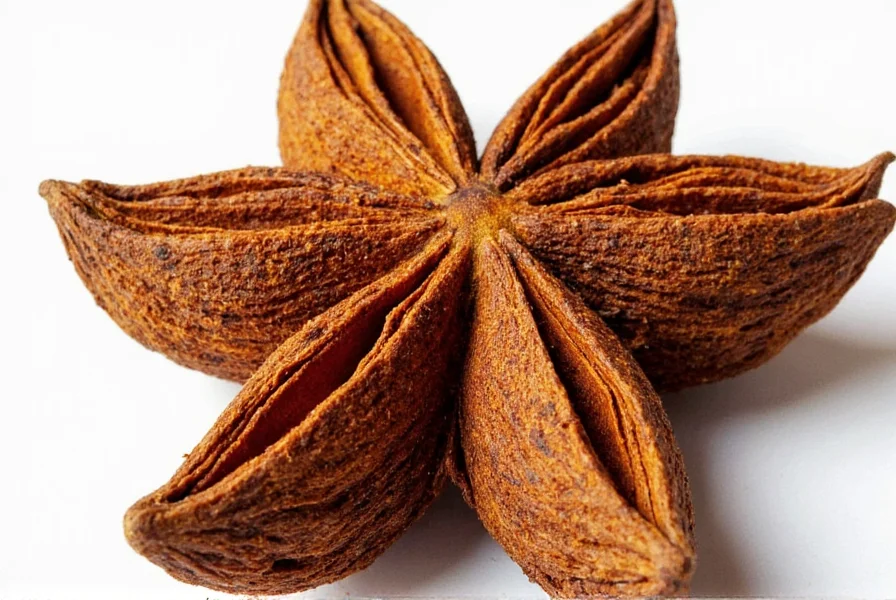Understanding what is star anise begins with recognizing its unique physical properties. This spice consists of 6-8 pointed reddish-brown carpels arranged in a star pattern around a central core, typically measuring 1-2 inches in diameter. Each carpel contains a single seed, though the entire star structure is used in cooking. The intense flavor profile combines sweetness with subtle notes of cloves and pepper, making it a versatile ingredient in both sweet and savory applications.
Botanical Background and Historical Significance
Native to subtropical regions of China and Vietnam, star anise has been used for over 3,000 years in traditional Chinese medicine and culinary practices. The evergreen tree that produces star anise can grow up to 60 feet tall and begins bearing fruit after six years of growth. Unlike anise seed (Pimpinella anisum), which belongs to the Apiaceae family, star anise comes from the Schisandraceae family, explaining their botanical differences despite similar flavor profiles.
Star Anise vs Anise Seed: Clearing the Confusion
Many people wonder what is star anise compared to regular anise, as both share licorice-like flavors. This comparison table highlights key differences:
| Characteristic | Star Anise | Anise Seed |
|---|---|---|
| Botanical Source | Illicium verum (evergreen tree) | Pimpinella anisum (annual herb) |
| Flavor Intensity | Stronger, more complex | Milder, sweeter |
| Physical Form | Whole star-shaped fruit | Small oval seeds |
| Primary Growing Regions | China, Vietnam | Mediterranean, Middle East |
| Shelf Life | 2-3 years when stored properly | 1-2 years |
Culinary Applications of Star Anise
Professional chefs and home cooks value star anise for its ability to add depth to dishes. When exploring what is star anise used for, consider these applications:
- Braising and stewing - Whole stars infuse broths and sauces with complex flavor without overwhelming the dish
- Baking - Ground star anise enhances cookies, cakes, and fruit compotes
- Spice blends - Essential in Chinese five-spice powder and Indian garam masala
- Beverages - Used in mulled wine, chai tea, and certain liqueurs like absinthe
For optimal flavor extraction, add whole star anise early in the cooking process. The spice's tough structure requires time to release its aromatic compounds. When using ground star anise, add it later in cooking to preserve volatile oils.

Health Benefits and Nutritional Profile
Research into health benefits of star anise reveals several promising properties. This spice contains shikimic acid, the primary ingredient used in manufacturing Tamiflu, an antiviral medication. While you shouldn't consume star anise as medicine, its traditional uses include:
- Digestive aid for relieving bloating and gas
- Natural antimicrobial properties
- Rich in antioxidants including linalool and vitamin C
- Potential anti-inflammatory effects
Nutritionally, one teaspoon (2g) of ground star anise contains approximately 8 calories, 0.3g fat, 2g carbohydrates, and provides small amounts of iron, magnesium, and calcium. Always consult a healthcare provider before using star anise for medicinal purposes, especially if pregnant or taking medications.
Selecting and Storing Star Anise
When shopping for this spice, look for deep reddish-brown stars with a strong, sweet aroma. Whole stars maintain their potency longer than pre-ground versions. To maximize shelf life:
- Store in an airtight container away from light and heat
- Keep in a cool, dark cupboard (not above the stove)
- Check potency by rubbing a star between fingers - fresh spice should release strong fragrance
- Replace after 2-3 years for optimal flavor

Substitutes When Star Anise Isn't Available
If you're wondering what is star anise substitute when it's not in your pantry, consider these alternatives:
- Anise seed (use 3/4 teaspoon seed for each star)
- Fennel seeds (milder flavor, use 1:1 ratio)
- Chinese five-spice powder (contains star anise plus other spices)
- Fennel pollen (more expensive but intense flavor)
Remember that substitutes won't perfectly replicate star anise's unique flavor profile, but they can provide similar licorice notes in a pinch. For authentic Asian recipes, however, nothing truly replaces genuine star anise.
Common Questions About Star Anise
Is star anise the same as anise seed?
No, star anise and anise seed come from completely different plants. Star anise (Illicium verum) is a star-shaped fruit from an evergreen tree native to Asia, while anise seed (Pimpinella anisum) comes from a flowering plant in the parsley family. Though both contain anethole giving them similar licorice flavors, they have distinct flavor profiles and culinary applications.
Can you eat star anise whole?
While star anise is safe to cook with whole, it's generally not meant to be eaten directly due to its tough, woody texture. Chefs typically add whole stars to dishes during cooking and remove them before serving. The spice releases its flavor gradually during simmering but remains too hard to chew comfortably.
What does star anise taste like?
Star anise has a warm, sweet flavor with prominent licorice notes, but also contains subtle hints of cloves, pepper, and citrus. Its taste is more complex and slightly sharper than regular anise seed, with a lingering sweet finish. The intensity makes it ideal for balancing both sweet and savory dishes when used in appropriate quantities.
Is star anise safe to consume?
Yes, Chinese star anise (Illicium verum) is safe for culinary use in normal food quantities. However, avoid Japanese star anise (Illicium anisatum), which is toxic and can cause serious neurological symptoms. Always purchase from reputable sources to ensure you're getting the edible variety. People with certain medical conditions or taking specific medications should consult their healthcare provider before consuming large amounts.
How do you grind star anise?
To grind star anise, first ensure the stars are completely dry. Place them in a coffee grinder dedicated to spices (not your regular coffee grinder) and pulse until you achieve the desired consistency. Alternatively, place stars in a sealed plastic bag and crush with a rolling pin or mortar and pestle. For best flavor, grind just before use as the volatile oils dissipate quickly after grinding.











 浙公网安备
33010002000092号
浙公网安备
33010002000092号 浙B2-20120091-4
浙B2-20120091-4